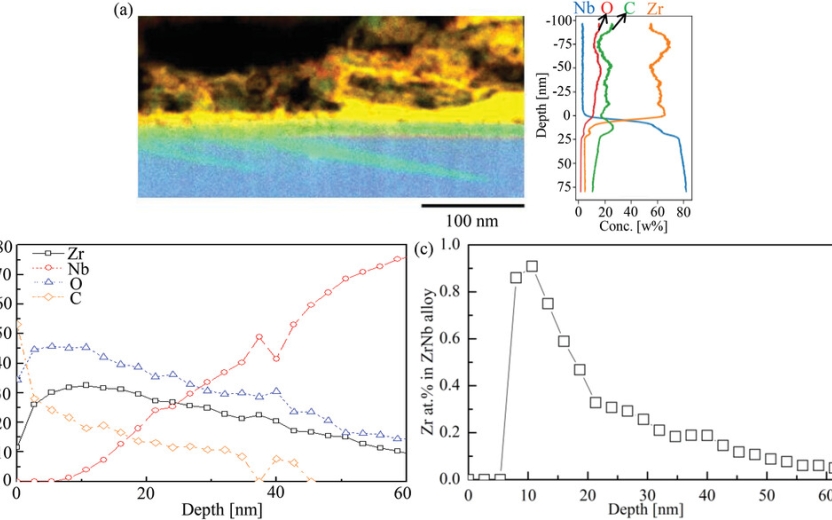ZrNb(CO) RF Superconducting Thin Film with High Critical Temperature in the Theoretical Limit
High-efficiency superconducting resonators are essential for accelerating bright beams of electrons. These resonators are already the most efficient ever made by humankind: at a similar level of efficiency, a guitar strummed by Jimi Hendrix would still be humming today. One might expect that these devices use complex, high-Tc superconductors, but in fact they still rely on the same humble superconductor that first came into use half a century ago: niobium. This means that there is the potential for even more efficient particle accelerators. To this end, many alternative superconductors have been explored that would theoretically offer even more impressive resonant properties than niobium. However, all have proven to be too sensitive to nanoscale defects to approach their full potential.Our research reveals a new approach to this problem: by introducing zirconium to the niobium surface, we can potentially improve its superconducting properties without inadvertently creating harmful material defects. Based on a new theoretical analysis of the niobium-zirconium system, we show that the beneficial effect of zirconium is much greater than previously thought, and the recipes we have developed produce niobium-zirconium surfaces with record-breaking superconducting critical temperatures. This opens a new pathway to produce even more efficient superconducting resonators in the future, which could have a major impact across the world of physics.
This exciting progress toward niobium-zirconium superconductors for particle accelerators was made possible by the diverse expertise of CBB researchers who performed Ginzburg-Landau theory calculations of the maximum electromagnetic field the alloys could withstand, pioneered novel electrochemical growth methods for high-Tc surfaces, analyzed sample cross sections with nanometer resolution, and ran density-functional theory calculations to probe alloy stability and superconductivity. Putting our skills together has greatly accelerated our progress towards more efficient production of bright beams.
Z. Sun, T. Oseroff, Z. Baraissov, D. K. Dare, K. Howard, B. Francis, A. C. Hire, N. Sitaraman, T. A. Arias, M. K. Transtrum, R. Hennig, M. O. Thompson, D. A. Muller, and M. U. Liepe, “ZrNb(CO) RF Superconducting Thin Film with High Critical Temperature in the Theoretical Limit,” Advanced Electronic Materials, vol. 9, no. 8, p. 2300151, 2023, doi: 10.1002/aelm.202300151
N. S. Sitaraman, Z. Sun, B. L. Francis, A. C. Hire, T. Oseroff, Z. Baraissov, T. A. Arias, R. G. Hennig, M. U. Liepe, D. A. Muller, and M. K. Transtrum, “Enhanced Surface Superconductivity of Niobium by Zirconium Doping,” Phys. Rev. Appl., vol. 20, no. 1, p. 014064, Jul. 2023, doi: 10.1103/PhysRevApplied.20.014064

